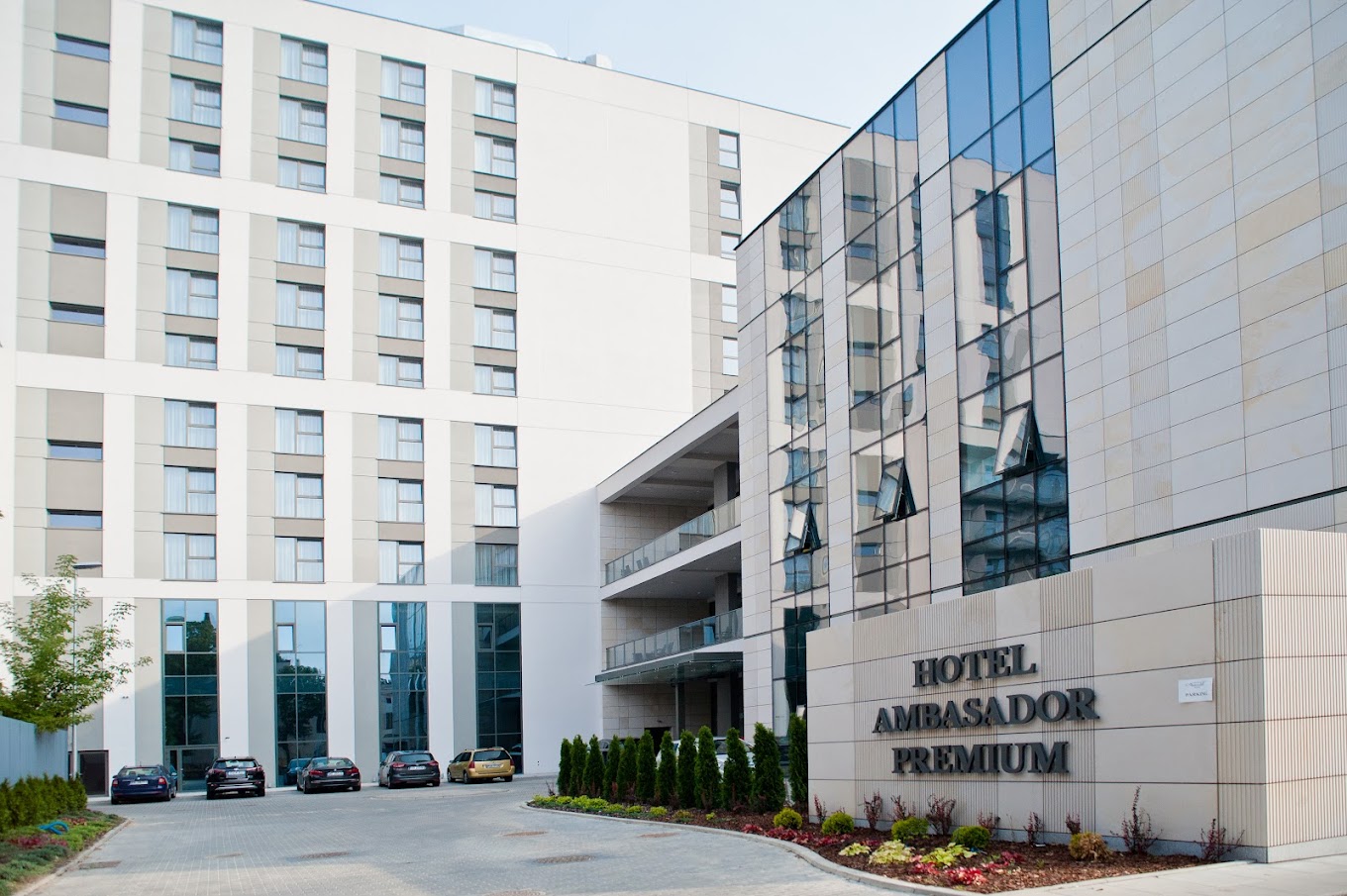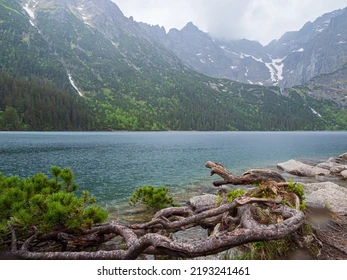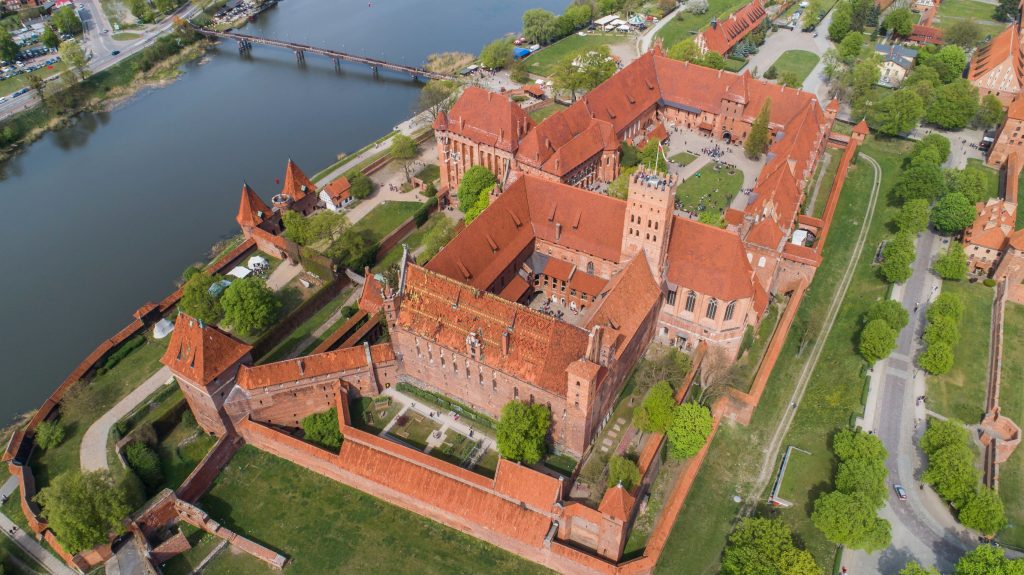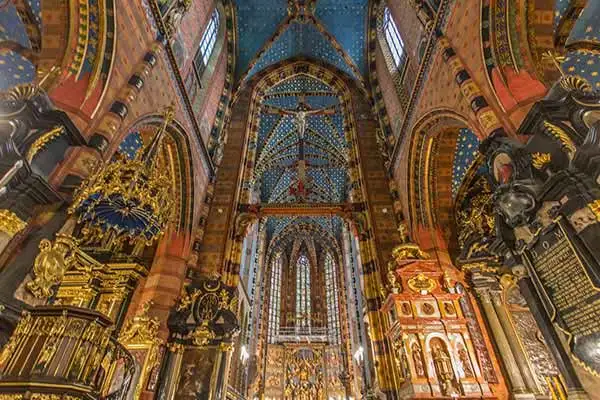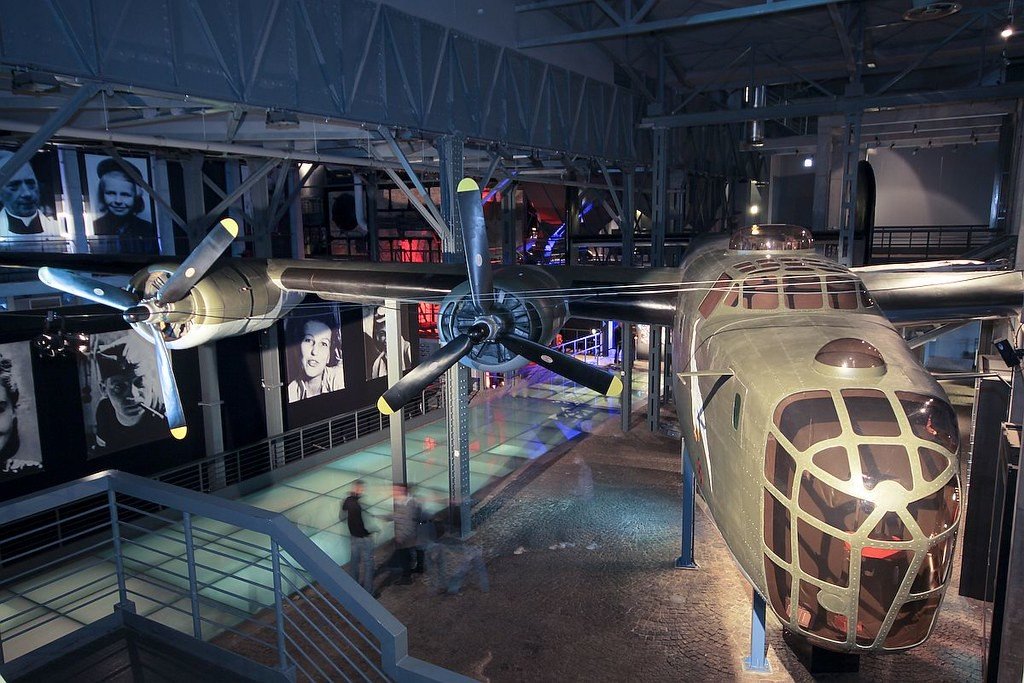Popular Hotels in Poland
InterContinental Warsaw by IHG
Poland
$312InterContinental Warsaw, a five-star IHG hotel, stands as one of the tallest buildings in Poland, offering a blend of modern architecture and luxurious accommodations in the heart of Warsaw.Located at Emilii Plater 49, the hotel provides easy access to major attractions such as the Warsaw Old Town, the National Museum, and the Warsaw Uprising Museum. Its proximity to the Warszawa Centralna railway station and the Złote Tarasy shopping mall makes it a convenient choice for both business and leisure travelers . The hotel boasts 414 elegantly appointed rooms, including 76 extended-stay suites equipped with kitchenettes, workspaces, and relaxation areas.Guests can enjoy panoramic views of the city, especially from rooms overlooking the iconic Palace of Culture and Science. Each room features modern amenities such as high-speed internet, LED TVs, and luxurious bathrooms with separate bathtubs and walk-in showers . Dining at InterContinental Warsaw is a culinary experience, with the award-winning Platter by Karol Okrasa offering a menu that combines traditional Polish cuisine with international flavors.The Downtown Restaurant provides a delightful breakfast with views of the city, while the Club InterContinental on the 41st floor offers guests complimentary breakfast, light snacks, and evening drinks in an exclusive setting . For relaxation and wellness, the hotel's Riverview Wellness Centre spans the top two floors, featuring a fitness center, sauna, steam bath, and a swimming pool with breathtaking city views.Business travelers can take advantage of the 24-hour business center, meeting rooms, and concierge services. Additional amenities include on-site parking, pet-friendly accommodations, and a commitment to sustainability as a single-use plastic-free hotel .
Book NowBALTHAZAR DESIGN HOTEL
Poland
$148Balthazar Design Hotel is a luxurious boutique hotel nestled in the heart of Kraków’s historic Old Town, situated on Grodzka Street—a charming, pedestrian-only thoroughfare that connects the Main Market Square to Wawel Castle. Housed in a meticulously restored 19th-century townhouse, the hotel seamlessly blends Art Deco elegance with contemporary comfort. Its prime location places guests within walking distance of iconic landmarks such as St. Martin’s Church, St. Mary’s Basilica, and the picturesque Planty Park. The hotel offers 25 uniquely designed rooms and suites, each adorned with plush furnishings, Molton Brown toiletries, and thoughtful touches like handwritten welcome notes and nightly stories about Kraków’s legends, accompanied by Amaretto and cookies. Amenities include king-size beds, Smart TVs, underfloor heating in bathrooms, and cedar-scented interiors. Guests appreciate the personalized service, with staff often going above and beyond to accommodate special occasions and preferences. For those seeking tranquility, rooms overlooking the courtyard provide a peaceful retreat. Culinary delights await at the hotel’s acclaimed Fiorentina restaurant, renowned for its romantic ambiance and inventive cuisine.Specialties include Florentine-style steak prepared on a charcoal grill, Polish caviar, and a cherry-shaped foie gras starter. Breakfast is served à la carte, featuring a selection of freshly baked breads, cheeses, fruits, and eggs cooked to order, all presented on a three-tier tray. While the hotel does not have an on-site spa or pool due to its historic building constraints, it compensates by offering in-room massage services and complimentary passes to a nearby gym.Guests have praised the attentive staff, luxurious accommodations, and exceptional dining experiences, making Balthazar Design Hotel a top choice for travelers seeking a romantic and culturally rich stay in Kraków.
Book NowH15 Palace Hotel
Poland
$210H15 Luxury Palace is a five-star hotel nestled in the heart of Kraków’s Old Town, just steps from the Main Market Square and the Czartoryski Princes Museum.Housed in the historic Lubomirski Palace, which dates back to the 16th century, the hotel seamlessly blends centuries-old architecture with contemporary luxury. The building underwent a meticulous restoration between 2016 and 2020, preserving original Baroque features like stuccoed archways and polychrome ceilings, while introducing modern amenities and design elements . The hotel offers 70 individually designed rooms and suites, each combining historical charm with modern comfort.Guests can enjoy marble-clad bathrooms, state-of-the-art entertainment systems, and elegant furnishings. The Artesse Restaurant, recognized by the Michelin Guide, serves contemporary interpretations of traditional Polish cuisine, while the on-site bistro and lounge bar provide additional dining options . For relaxation, the hotel's spa and wellness center features an indoor pool, sauna, steam room, and a range of luxurious treatments.Guests can indulge in unique rituals inspired by the palace's history, utilizing natural ingredients like herbs, honey, and wine . The rooftop terrace offers panoramic views of Kraków, providing a serene spot to unwind. With its prime location, guests have easy access to Kraków's cultural landmarks, including Wawel Castle, St. Mary's Basilica, and the Cloth Hall.The hotel's commitment to excellence is evident in its attentive service, luxurious accommodations, and rich historical ambiance, making it a premier choice for travelers seeking an unforgettable stay in Kraków .
Book NowRaffles Europejski Warsaw
Poland
$250Raffles Europejski Warsaw is a distinguished five-star hotel located on Krakowskie Przedmieście, one of Warsaw’s most prestigious avenues.Originally opened in 1857 as Hotel Europejski, it was designed by Polish-Italian architect Enrico Marconi and quickly became a symbol of luxury and sophistication in the city. After suffering significant damage during World War II, the hotel underwent extensive renovations and reopened in 2018 under the management of Raffles Hotels & Resorts, blending its rich historical legacy with modern elegance . The hotel offers 106 rooms and suites, each thoughtfully designed with bespoke furniture and curated artworks from the Hotel Europejski's extensive art collection, which features nearly 500 pieces by over 120 Polish artists. The interiors, crafted by designers Boris Kudlička and Lázaro Rosa-Violán, pay homage to the building's storied past while providing contemporary comfort . Guests can enjoy views of Warsaw’s historic sites, including the Presidential Palace and Piłsudski Square, from their accommodations. Dining at Raffles Europejski Warsaw is a culinary journey.The Europejski Grill, the hotel's signature restaurant, offers modern interpretations of Polish classics, while the Long Bar serves a selection of cocktails inspired by its Singaporean namesake . For those with a sweet tooth, the Lourse Warszawa patisserie continues a century-old tradition of serving exquisite pastries in an elegant setting . The Raffles Spa provides a tranquil retreat in the heart of the city, featuring six treatment rooms, an indoor pool, saunas, steam baths, and a relaxation zone. Treatments incorporate products from Aromatherapy Associates and Sisley Paris, drawing inspiration from Asian, Middle Eastern, and European wellness traditions. Additionally, the hotel offers a 24-hour fitness center equipped with Technogym™ equipment, ensuring guests can maintain their wellness routines during their stay .
Book NowThe Westin Warsaw
Poland
$235The hotel's spa offers in-room massages and treatments such as manicures and pedicures. Other on-site facilities include a sauna.
Book NowHotel Ambasador Premium
Poland
$200Hotel Ambasador Premium offers 187 single and double rooms as well as 18 apartments.
Book NowSofitel Grand Sopot
Poland
$180The Sofitel Grand Sopot is a landmark of elegance and history on Poland’s Baltic coast. Originally opened in 1927 as the Kasino Hotel, it was designed to attract Europe’s elite with its Art Deco architecture, luxurious interiors, and proximity to the Sopot casino. The hotel quickly became a symbol of sophistication, offering innovative amenities like mineral-rich seawater taps in guest bathrooms. Its guest list included royalty, politicians, and celebrities, establishing its reputation as a premier destination. During World War II, the hotel was commandeered by German military authorities and served as Adolf Hitler’s headquarters in September 1939.Despite the turmoil, the building sustained minimal structural damage. Post-war, it reopened as the Grand Hotel Sopot, managed by various entities over the decades. The hotel continued to host notable figures such as Charles de Gaulle, Marlene Dietrich, and Fidel Castro. It also became a cultural hub, hosting events like Poland’s first disco night and the debut of the iconic band “Czerwone Gitary.” In 2005, the hotel underwent a significant renovation under the Accor hotel group, reopening as the Sofitel Grand Sopot.The restoration preserved its historic charm while introducing modern luxury, including new rooms, a wellness center with a swimming pool, and updated interiors. Today, the hotel boasts 126 rooms, including 43 suites, each blending French elegance with local character. Notable accommodations include the Charles de Gaulle Presidential Suite, which has hosted dignitaries like Fidel Castro and Prince. Situated directly on the Baltic shoreline, the Sofitel Grand Sopot offers guests stunning sea views, a private beach, and proximity to the famous Sopot Pier.Its Grand Blue restaurant serves Polish cuisine with a focus on seafood and regional products, while Le Bar provides signature cocktails and live music. The hotel continues to be a preferred venue for weddings, conferences, and cultural events, maintaining its legacy as a beacon of luxury and history in Sopot.
Book Now
